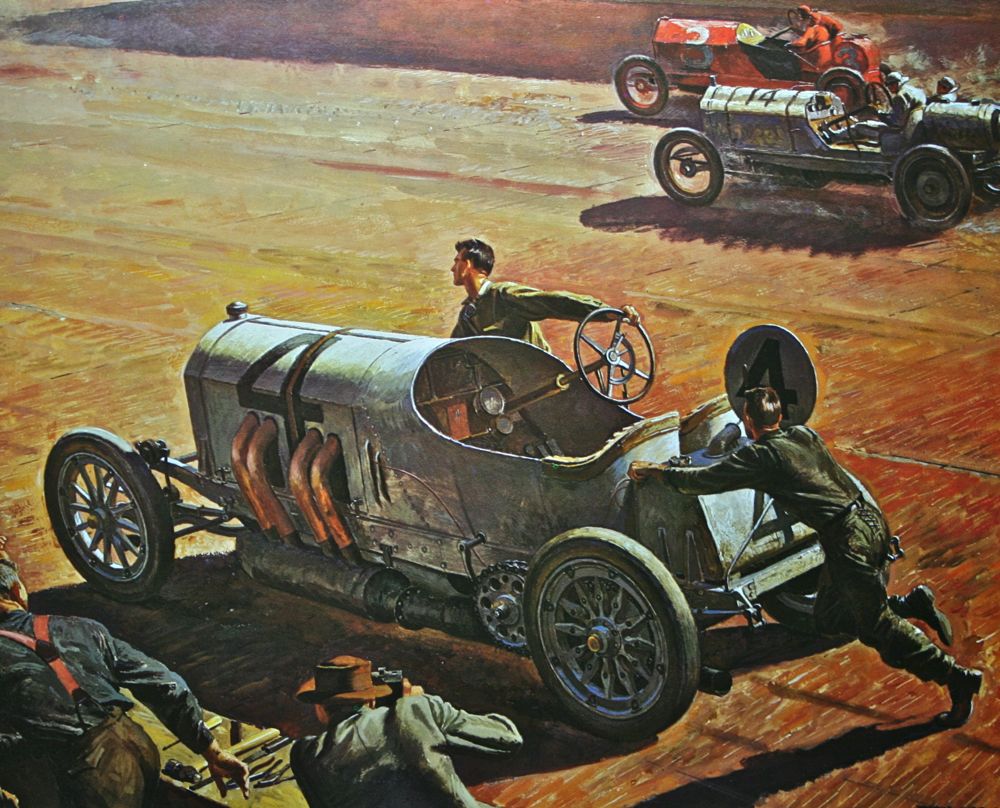The Indianapolis Motor Speedway complex was built in 1909 as a gravel-and-tar track and hosted a smattering of small events, including ones for motorcycles. The first long distance event, in "fearful conditions", was the 100-lap Prest-O-Lite Trophy in 1909, won by Bob Burman in a Buick. Breakup of the asphalt led to two fatal accidents in the first two long-distance events (a 250 mi (400 km) and 300 mi (480 km), which was shortened to 235 mi (378 km) after two severe wrecks).
That these spectacles had attracted 15,000 paying customers (and crowds of up to 40,000) persuaded principal owner Carl G. Fisher to spend $155,000 on repaving the track with 3.2 million bricks; he also added a 2 ft 9 in (0.84 m) concrete wall around the track's circumference. During the 1910 Memorial Day weekend, the first events on the newly paved circuit drew 60,000 spectators; Ray Harroun won the 200 mi (320 km) Wheeler-Schebler Trophy in a Marmon.
The first "500" was held at the Speedway on Memorial Day, May 30, 1911, run to a 600 cu in (9,800 cc) maximum engine size formula. It saw a field of 40 starters, with Harroun piloting a Marmon Model 32-based Wasp racer — outfitted with his invention, the rear view mirror.
In 1912, the purse was raised to US$50,000. The field was limited to 33 (where it remains) and a riding mechanic was made mandatory. This second event was won by Joe Dawson in a National, after Ralph de Palma's Mercedes broke.
After World War I, the native drivers and manufacturers regained their dominance of the race. Engineer Harry Miller set himself up as the most competitive of the post-war builders. His technical developments allowed him to be indirectly connected to a history of success that would last into the mid-1970s.
For musical entertainment prior to the start of the race, the Purdue All-American Marching Band began performing on the track near the finish-line in 1927 and has been the host band of the race ever since. In 1946 American operatic tenor and car enthusiast James Melton started the tradition of singing "Back Home Again in Indiana" with the Purdue Band before the race when asked to do so on the spur of the moment by Speedway president Tony Hulman. This tradition has continued through the years, notably by actor and singer Jim Nabors since 1972.
This year, 2014, will be Nabor's last, I will cry during the whole song. It will be the end of an era. The 500 and the Kentucky Derby opening ceremonies are traditions to me. This one, being Nabors last, will be very sad for me, and all race fans.


